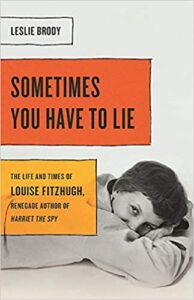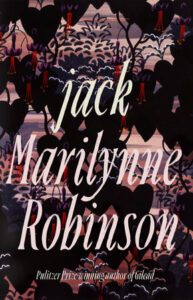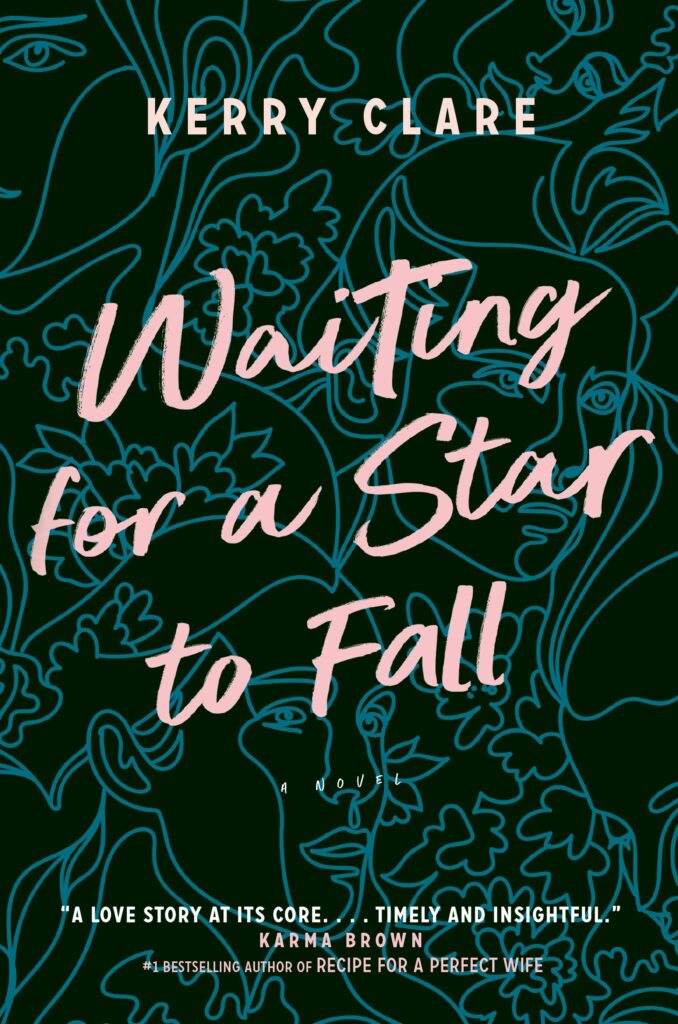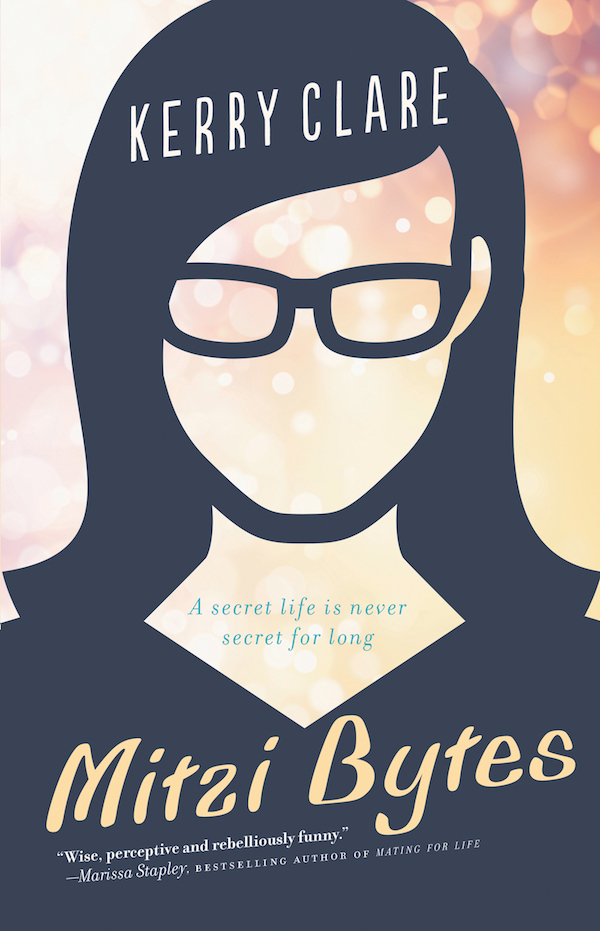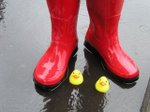March 4, 2021
Let Me Tell You What I Mean, by Joan Didion
For years, I kept a photocopied piece of paper pinned to a cork-board that hung on my wall, the following lines from Joan Didion’s essay “Telling Stories”: …it was at Vogue that I learned a kind of ease with words, a way of regarding words not as mirrors of my own inadequacy but as tools, toys, weapons to be deployed strategically on a page.” And it’s strange now to think about piece of paper, because I don’t write like that I at all. I never learned that ease, or such strategy, and my reverence for this passage (and for Didion in general) has always been mostly aspirational. I never ended up writing anything at the desk that the cork-board hung over, eventually writing my books while lying on the coach instead, far too reclined to be deploying weapons.
“Telling Stories” is the only essay in Didion’s new collection, Let Me Tell You What I Mean, that I have read before—and I had to visit the sub-basement of an archive to find it, so if my experience is anything to go by, these pieces aren’t so widely known. Though my expectations for the book were pretty low—Joan Didion is 86, and hit the height of fame with her 2005 memoir The Year of Magical Thinking, a book that doesn’t really typify what Joan Didion’s work is all about. Written in the throes of grief as well, it would have surprised me if anything written and published afterwards could have been as sharp and pointed (“tools, toys, weapons to be deployed strategically on a page”) as her previous work. I have appreciated every one of her releases since then, but there does seem to be a lack of urgency in all of it, they’re mainly obligatory, though always interesting. But of course, this is a writer who has been looking back on things since her early thirties, at least, who was born supposing that the best of everything was well behind her, so maybe it’s all just in keeping.
I read a review of this book (somewhere! Can’t remember where) that remarked upon the strangeness of the title, incongruous with Didion’s work, whose words were so strategically deployed that such explanations were usually unnecessary. Interestingly, the title itself does not come up in the book, and instead is (I assume) altered from the far more typically Didion-esque “Let me show you what I mean by pictures in the mind,” from her essay, “Why I Write.” Always a shower not a teller, in her introduction to her 1968 collection Slouching Toward Bethlehem, she writes about the advantages of being so physically unimposing as a figure that the people she’s writing about scarcely notice she’s there.
But in this collection, perhaps to satisfy readers seeking …Magical Thinking levels of disclosure, she’s more of a presence than I’d been anticipating, and the title does not seem so unfitting indeed. I get a sense of how a writer is formed and of her process, and not just simply her observational eye (which is eviscerating in her essay about Nancy Reagan, then First Lady of California). She’s also very prescient, in a 1968 essay about parental expectations that anticipates parenting fixations of the 20th century, or her 2000 piece on Martha Stewart, and branding, and the World Wide Web, and the expectations for women to succeed in a culture that is always going to hate them for having done so.
February 26, 2021
Wintering, by Katherine May

It’s funny you know, for some reason I was expecting a more literal guide to surviving winter with Katherine May’s Wintering, but she writes about having to wait years for snow to fall where she lives in the south of England. In order to get a handle on winter’s reality, she has to go on field trips. For her, wintering is a metaphor, an idea—one year, her husband becomes very ill, her own health is suffering, her son stops attending school due to anxiety. She and her family are forced to rest and retreat for a while, to observe a different kind of season, but one she feels she has a muscle for after a breakdown she’d experienced as a teenager. Sometimes the best thing is just to submit and acknowledge the season you are in, which is part of a cycle.
Wintering is a fascinating book about reconnecting with cycles, seasons, the rhythms of the natural world. Although it does feel curious to read this book here in Canada, written by a person from a country where people don’t tend to have parkas or even winter boots. May’s winter as metaphor doesn’t always translate here, where the season can go on so long, everything still and frozen, where we’re still digging out long after the vernal equinox. It’s hard to buy that this is a season as rich with life as all the others are. But I suppose that makes the book for me all the more purposeful.
May’s writing is bright and engaging. I kept reading bits aloud to whoever had the good fortune to be in my presence. It made me consider becoming a modern-day Druid, to be honest, and I loved the parts about winter swimming, though I could never dare such a thing.
If you read and enjoyed Wintering, I recommend you read Maria Mutch’s beautiful memoir Know the Night (I reviewed it for the National Post and am still really proud of what I wrote) nominated for a Governor General’s Award in 2014. Definitely the two works are gorgeously complementary.
February 19, 2021
How the One-Armed Sister Sweeps Her House, by Cherie Jones
Do not let the beautiful cover fool you, or the setting in paradise: How the One-Armed Sister Sweeps Her House, by Cherie Jones, is a brutal book, violent and disturbing, but there’s nothing gratuitous about the violence, and the storytelling is absolutely stunning.
It’s a story told in pieces about a group of people on a beach in Barbados, away from the pretty tourist snapshots. The night Lala gives birth to her daughter, her husband kills a white man in a botched robbery at one of those big houses on the beach, and so begins the story, but it also stretches back years and generations before it, with Lala’s mother and her grandmother Wilma, who’d been the one to warn Lala away from the caves on the beach “where bad man go when they die…men that are too bad to rest easy in their graves down in those tunnels harvesting souls for the Devil.” The sister in the story goes exploring anyway, because “what is the use of a tunnel if you don’t get to see where it lead?” And she narrowly escapes with her life, but she loses her arm, and Lala scoffs at that:
“Well I bet it not so bad having one arm,” says Lala. “She can still do things like everybody else, she can still get a husband and some children and a house.” / “Stupid girl,” says Wilma, “how she’s she going to sweep it?”
Sweeping a house is important when you live by a beach, for keeping up appearances, but it’s also a metaphor for the practical matters of day-to-day life, those things that provide safety and security, for taking care of oneself. And the women in this novel have all started out with disadvantages, as we discover as the story gets put together, piece-by-piece. What caused Wilma, her daughter Esme, and then Lala to be the way they are, the violence and trauma in their pasts which meant that they’ve never been able to count on anybody really, that their lives are tough and hardscrabble, and they’d take any avenue out of it, except that none of the avenues really tend to lead anywhere at all.
Take Lala, for instance, who ends up with Adan, who dotes on their baby, but beats her—he was her getaway from Wilma and her husband who’d preyed on Esme and driven her to her own sorry fate. And her connection to Adan’s friend Tone, which stretched back years, when she first discovered him working in the garden at the house her grandmother was cleaning, Tone suffering from something we don’t know what until the end of the book. Breadcrumbs, are what Jones offers her reader, clues and hints. The book is a mystery, but not in the conventional way, because we know who did it from the novel’s first pages. It was Adan in the big house with a handgun. But what happens next? And the way the rest of the story unfolds is tragic, mesmerizing, twisty and surprising, Jones managing a complex and nuanced treatment of even the most despicable characters (and her most sympathetic characters get to behave despicably).
There’s also the wife of the dead man in the big house, herself from the island and her husband had been her getaway, but now he’s been murdered and here she is, right back where she started. The police officer with the digestive issues who thinks he’s putting the pieces together, but the pieces are all wrong. The sex worker who’s fed up with the cop who’s been threatening to arrest her since she stopped sleeping with him. Tone, who’s been running his whole life and can’t catch a break, and it doesn’t look like his fate’s due to change anytime soon.
The ending of this book is devastating, but perfect. Literally uplifting, and I’d say spiritually as well, and it’s hardly heartwarming, but instead heartsoaring, propelled by the power of story, the magic of Cherie Jones’ characters and prose.
February 16, 2021
The Midnight Bargain, by C.L. Polk
I’m not especially fond of the Canada Reads debates. I find them frustrating and annoying, to be honest, though this is mostly because of my own sensibilities than anything else. I don’t really like yelling at the radio. Last year, Jael Richardson did a daily recap of the debates on Instagram Live and I preferred following the series this way to the show itself. What I do love, however, is a Canada Reads lineup like what they’ve come up with this year, a list of books that are off the beaten track, that I might not have picked up otherwise, and that don’t immediately seem to have much in common, which means the connections between them are fascinating (and this is why I am not especially fond of the Canada Reads debates—I love the idea of how the books are enriched by their relationships to each other rather than having to pit them as competitors).
It helps that I’ve already read three of the titles on the list—Hench, by Natalie Zina Walschots; Butter Honey Pig Bread, by Francesca Ekwuyasi; and Two Trees Make a Forest, by Jessica J. Lee—and that I really loved them. And that I probably wouldn’t have read the final two titles otherwise, but not it seems kind of lazy not to read them all. Even if C.L. Polk’s The Midnight Bargain seems so far from up my alley that it’s in a different universe altogether. “It’s fantasy meets a regency romance,” I told my husband. He said, “But you don’t really like either of those things.”
“Ahh,” I answered him. “The power of hybridity.”
If not for Canada Reads, I wouldn’t have read The Midnight Bargain, set in an otherworld that feels a but like 19th-century England, but with magic, and if colonialism had never happened. I will admit that the world-building felt arduous to me at times, which is often my problem with fantasy—so much to keep track of and understand, when I’d prefer to get lost in the plot. But it started to pay off when it meant that the plot would have kinds outcomes that I’d never encountered in a novel before, where characters motivations turned out to be so much more complex and fascinating than they could have been in a world that was familiar.
Beatrice is a sorceress and about to embark on her first bargaining season, where she will be paired off with a husband, especially important since her father’s business stumbles have landed their family in enormous debt. But here’s where it gets complicated—once paired off, Beatrice will be required to wear a collar to suppress her magic powers, supposedly because the risk of being pregnant and inhabited by spirits is just too great, and so women are not permitted to practice magic until their childbearing years are over. But really this is just an excuse to keep women from realizing their own power, which suits the patriarchy just fine. But Beatrice has a plan—she’s been practising magic in secret and is so close to becoming a full-fledged Magus. If she can complete her self-taught course before her bargaining season, can she convince her father to let her stay single and join him in running their family business, saving her family from financial ruin and keeping her freedom at once?
But when Beatrice meets Ianthe Lavan, things get more complicated. Turns out he’s everything she’s dreamed of and so wealthy that her family’s fortunes would be saved by their union–but is she willing to give up the most essential part of herself to fulfill societal expectations?
Is such a thing worth the promise of love?
Totally not my kind of thing at all, but that’s what I liked best about it. The Midnight Bargain was rich, absorbing and wonderful, totally transporting.
February 12, 2021
A Black Man’s Toronto

Something I have noticed with Black History Month this year is how Black History is all around, from plaques for Albert Jackson, Toronto’s first Black postman, who lived in my neighbourhood, and Olympian Sam Richardson, who attended the high school down the street, to the streetcar rolling by displaying photos of Black Canadians like Lincoln Alexander and Jean Augustine.
Last weekend after I learned that a nearby skating rink was named for Harry R. Gairey, a Black community leader, and he’d published a book, I was lucky to find a weathered library copy. An oral history, transcribed and edited by Donna Hill, mother of writer Lawrence, A Black Man’s Toronto was published by the Multicultural History Society of Ontario in 1981.
A few years ago, Kamal Al-Solaylee wrote a piece in Canadian Notes & Queries about the whiteness of nostalgia, our fondness for heritage photos that usually omit the multicultural histories of our cities. How easy it might be to suppose that Black people and Brown people haven’t always been part of the history of these places too.
And how our sense of the places we live is enriched by knowing all parts of the history. I know the streets and buildings Gairey writes about in his story, all the churches in Toronto, the school his son attended, the downtown neighbourhood he and his wife lived in before he moved out to Scarborough in the 1970s. The West Indian Club on College Street that burned down in 1968— I would never have known, but for this book. Walked by the place yesterday and felt its ghost.
Gairey was a union leader, became a civil rights activist, and a leader and supporter of Black and other immigrants to the city. He helped to challenge Canada’s racist immigration laws and brought forth Toronto’s first anti-discrimination laws after his son was prohibited from entering a skating rink.
His history is Toronto’s history and I am so glad to know it.
February 3, 2021
And This is the Cure, by Annette Lapointe
So you could pitch it like this: imagine every Miram Toews book you have ever read—A Complicated Kindness, Irma Voth, The Flying Troutmans, All My Puny Sorrows, Women Talking, Summer of My Amazing Luck, Swing Low, I mean everything—all packed together in a single volume. Which is only misleading, because it makes it sound derivative, which it isn’t. So how about this instead: former cult member turned riot grrrl writes a tell-all memoir and finds fame as house of a Canadian broadcasting culture flagship pop culture radio show after its former host (a noted sexual predator) flames out in disgrace, but then her past life comes back to haunt her when her ex-husband is murdered and her estranged 11 year-old daughter is returned to her care, which means she’s forced to confront her ex’s conservative, religious family and their disdain for her, all the while she’s trying to stay on her meds and keep as stable as possible as she avoids confronting the trauma buried in her past, which does not necessary lie where she thinks it does…and then her band goes on tour in Japan.
And This is the Cure is the third novel by Annette Lapointe, whose first book Stolen was nominated for the Scotiabank Giller Prize in 2006. I also really appreciated her second White Tail Shooting Gallery in 2013, writing in a blog post that the book, “baffled me throughout, disturbed and troubled me, but it also intrigued me, continually surprised me, never stopped me wondering what would happen next…” And the same stands for her latest, which I loved. A book that ostensibly should be too much—how can a person fit so many things into a single novel?—but which works, is eminently readable. Mostly because of Allison Winter, Lapointe’s stunning fictional creation, a woman who is shattered and still standing, flawed and perfect, terrified and brave, smart and ridiculous, loving and fierce, damaged and whole, missing and present. A singular creation: regarding her daughter as a baby, she says, “I’d happily have killed things for her, but I would have preferred her to stay at home, in someone else’s custody, while I did it… I’d have made a decent, if absent, father.”
She’s the trickiest narrator, withholding information about her story until the present drags it out of her. She’s also unapologetic with a ferocity that never wavers, and I love that. Her unreliability turns the novel into the most fascinating, many-sided shape, but her perspective is still a steady one, the compass point that guides the reader through so much stuff. A lesser writer would have had this whole book come off its rails, but Lapointe nails it, unbelievably. I loved it.
January 29, 2021
Sometimes You Have to Lie, by Leslie Brody
While Harriet M. Welsch put the truth in her notebooks, Louise Fitzhugh, who created her, kept her own truth closer to her chest, and it stayed guarded for years ever after, her literary executors and friends fiercely protective of the author. An academic book was published in 1991 that did provide some insight into the life and times of Fitzhugh, but its author was not granted proper access to archives and the book was kind of middling, and so we’ve had to wait all the way until now for a proper literary biography, Sometimes You Have to Lie, by Leslie Brody, whose previous work as biographer includes a book about Jessica Mitford, so you just know this is the kind of work you want to get behind.
Louise Fitzhugh’s story is pretty wild, and also sad. Her mother was a dancer and her father was a millionaire. They met on a transatlantic crossing in the 1920s, marrying in a whirlwind, and the whole thing was a terrible idea. Their daughter, Louise, suffered in the fallout, subject of a much publicized custody conflict, which her father won, and prohibited her mother from seeing her for years. Essentially raised by nursemaids, Fitzhugh grew up privileged in the Jim Crow South, and was well aware of the injustice that surrounded her. Also, much like Harriet, she seemed to always know exactly who she was, dating women while still in high school and not caring a fig for social convention.
Like many before her, she fled to New York City, seeking a creative life. She found success as a painter, but such success is relative—it’s a tough life, even for an heiress. She found her way into publishing by illustrating a picture book, Suzuki Beane, written by Sandra Scoppettone, a satire of the Eloise books set in beatnik Greenwich Village, and then eventually a few very rough pages of what would become Harriet the Spy found their way to Ursula Nordstrom, legendary editor of authors like EB White, Maurice Sendak, Margaret Wise Brown, and more.
Fitzhugh was not a people-pleaser, although she was well-liked and had a lot of friends, connected to many through artistic and lesbian circles. But it’s hard out there for a sensitive person, and she struggled to fit into most roles that were assigned to her, children’s book author among them. She refused to do publicity for her books. She had fallings out with her editors. She had trouble with her health, and didn’t heed doctors’ advice to stop drinking. And then in 1974, she published the novel Nobody’s Family is Going to Change, received a devastating review in Publisher’s Weekly, and then died. It was a brain aneurysm and possibly the two events were unrelated, but still. Honestly, it’s the kind of blunt conclusion that would come out of Harriet’s notebook. (“MY MOTHER IS ALWAYS SAYING PINKY WHITEHEAD’S WHOLE PROBLEM IS HIS MOTHER. DOES HIS MOTHER HATE HIM? IF I HAD HIM I’D HATE HIM.”)
I loved this book. Fitzhugh’s life was as fascinating as her work, just as complicated too and tricky to parse, and Brody really does her justice.
January 25, 2021
Jack, by Marilynne Robinson
It took me so long (by my standards; yours might be different) to finish reading Jack, Marilynne Robinson’s latest book in her series that began with Gilead. I started reading on Wednesday, feeling like it seemed a good day to read a great American novelist, but I just had all the feelings that day and was exhausted, and wasn’t in a great place to begin a book that asked much of its reader, even if it delivered rewards in return. This is not a book with a furious plot, or much of a plot at all if you consider that predestination renders plot kind of moot. This is the story of John Ames Boughton, disgraced and formerly of Gilead, IA, whose story we know from previous books in the series (and this book is the final). Though, truth be told, I don’t remember very much about the other books in the series, not specifically. I have read most of them twice, but I recall them more in general than specifically. But I didn’t need the references much at all to appreciate the value of Jack, whose protagonist is cut off from his past anyway—but not entirely. And what he’s been up to gets told in kind of a sideways manner, Jack never the kind of person to confront anything head-on. Out of prison, just barely getting by in an down-and-out rooming house, he has come into the company of a young Black school-teacher who is, like him, the child of a preacher, and the two are drawn together for reasons that Robinson manages to make complete sense of, no matter what a terrible idea their relationship is for reasons of legality and otherwise. Because of course a white man and a Black woman cannot be a couple in 1950s’ America, and Jack Boughton a terrible bet anyway—and yet you’d wager. That’s what I love about this book. The way that Robinson makes clear the anguish of being Jack and loving Jack, and of watching him make terrible choices over and over again, and there is just a kernel of goodness we’re determined to put there (and so is Jack’s father, and Della too, the school teacher), even if Jack doesn’t seem it himself.
Slow, rich, and satisfying, is how I found this book. There was something soothing in its meditativeness and it as a pleasure to get lost in its evocations.
January 21, 2021
Little Threats, by Emily Schultz
I really liked Emily Schultz’ new novel Little Threats, a book that read like a cross between Ben Lerner’s Topeka School and Jennifer Hillier’s Jar of Hearts, and was a thriller that hooked me from the start and didn’t let go. Set in 2008, years after Kennedy Wynn is released from prison for a crime she has no memory of committing, the murder of her best friend, Haley, the novel follows Kennedy as tries and fails to reconnect with the world she left behind—her father who drinks away his troubles, her twin sister who’s battling her own demons, Haley’s family who will never believe that justice has been served, and the charismatic older guy turned middle-aged schlub whom Kennedy finally sees through. When producers of a true crime series start knocking around asking questions, the story around Haley’s murder begins to unravel, but will the truth prevail? The plot was a little wobbly in places, and the conclusion less than shocking, but I still really liked this novel, its portrayal of 1990s’ culture, and exploration of girlhood, womanhood, and sisterhood.
January 13, 2021
The Push, by Ashley Audrain
“Sippy-cup sinister” is one of my favourite literary genres, books like Emily Perkins’ A Novel About My Wife, Harriet Lane’s Her, Melanie Golding’s Little Darlings, and other forbears including We Need to Talk About Kevin and Doris Lessing’s The Fifth Child.
Helen Phillips’ The Need also falls into this category, and I’m still overwhelmed by how perfectly she nailed the nightmare of being awoken in the night to a small child standing over you. As terrifying as anything you’d ever fear discovering under the bed.
And Ashley Audrain gets that uncanny disquiet in her buzzed about debut, The Push, and a woman for whom motherhood fails to take, raising questions of nature and nurture, and eventually culminating in her worst nightmare.
The novel is wholly successful as a thriller, full of twists and surprises, and so compelling in its ambiguity, even if that ambiguity is enraging, but that’s the point, the nightmare. (My one criticism is that the back stories exploring the protagonist’s maternal lineage seem insufficiently fleshed out and are perhaps unnecessary…)
But I couldn’t stop thinking about The Push in the context of Sue Miller’s The Good Mother, which I had read just before it. A very different novel, but similarly exploring the ways that mothers are not permitted complexity, whether it’s desire, ambivalence, fallibility, or fears.
This is a novel whose effect is to make you uneasy. It resists neat conclusions and doesn’t exactly satisfy, which is not a criticism at all, instead a testament to the novel’s power—The Push isn’t finished with it’s reader even after the reader is finished with it.
I’ll be thinking about this one for a very long time.




